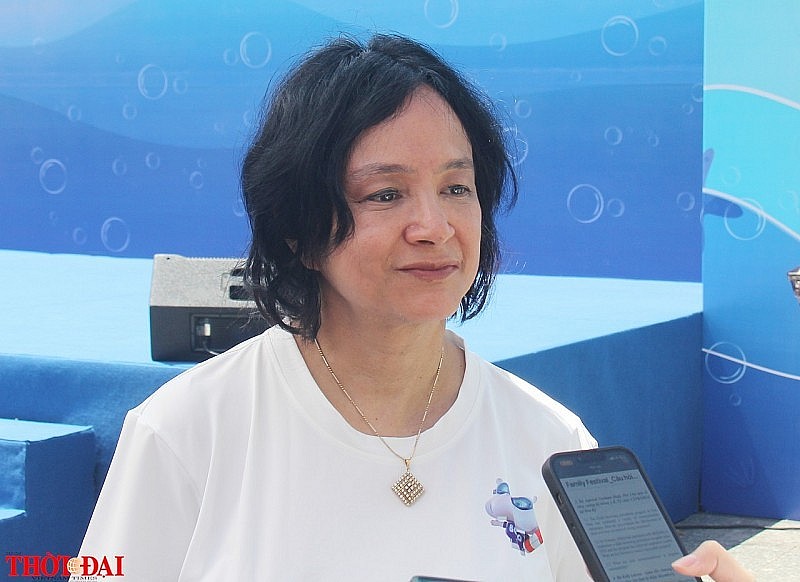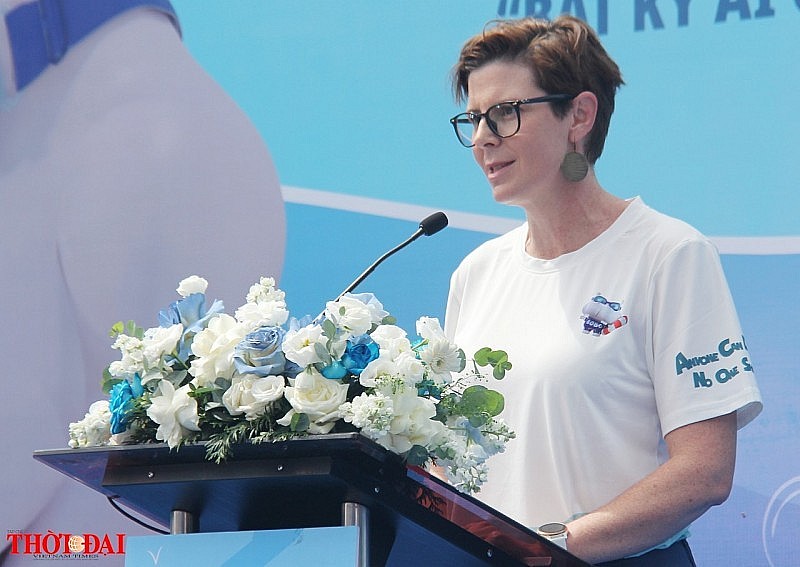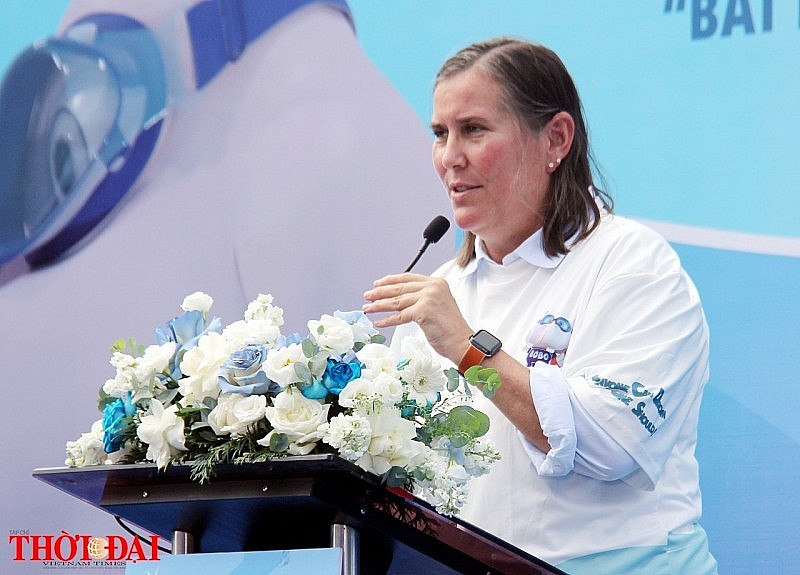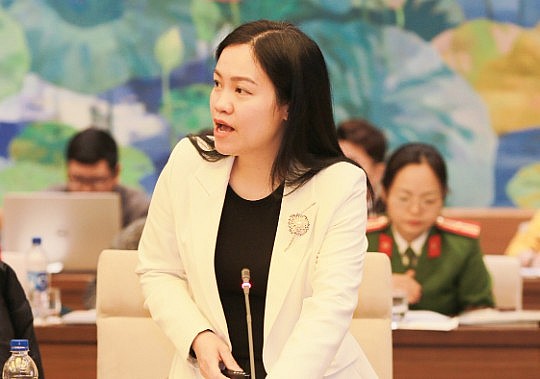“`

|
| Agarwal Vandana Shah, Vice President of Health System Strengthening, CTFK/GHAI, USA (Photo: Valerie Mai) |
Agarwal Vandana Shah, Vice President of Health System Strengthening, CTFK/GHAI, USA – Strengthening cooperation on many levels, ensuring localities’ financial ability
Regarding the key factors to the successful cooperation between GHAI and MOLISA, I have to emphasize this “partnership, partnership, partnership”. At global level, we partner with both Bloomberg Philanthropies and WHO in bringing this program. Obviously, at the national level, we have strong partnerships with the National Assembly, Youth Union, and various ministries, especially the Ministry of Health. At the provincial level, the most important thing is to learn global best practices on drowning prevention and tailor them to the context and culture of Vietnam.
For program sustainability, local ownership and political will are essential. Both national and local levels need political will. It is important for provinces to commit financial resources and continue mobilization efforts such as training of teachers, swim lessons, and providing community pools. Thus, the two key factors for program sustainability are financial commitment and strong leadership at the local level.

|
| Angela Pratt – WHO Representative in Vietnam (Photo: Valerie Mai) |
Angela Pratt – WHO Representative in Vietnam – Continuing to create legal frameworks and raise public awareness
Drowning prevention is an issue in which many people have roles to play. The government plays an important role in leadership, commitment, and funding. Communities and parents also have a role to play in making swim safety and classes available for children. They can also ensure body water safety, such as having fences around swimming pools and supervising their children carefully.
WHO recommends four key things. First, focus on proven methods, including providing swimming skills training and classes, raising awareness of basic safety skills around water for parents, and ensuring their availability in all communities around the world. Second, ensure that these interventions are supported by the laws and policies of the country. Third, ensure funding for the implementation and scale-up of these interventions. Fourth, raise awareness of the importance of drowning prevention and educate people on what they can do to prevent it.
One impressive aspect of Vietnam is the strong commitment from the government, from the Prime Minister down to various ministries such as MOLISA, the Health Ministry, and the National Assembly. Moving forward, WHO wants to continue working closely with MOLISA and the National Assembly to recommend policies and laws that we know will be effective. Additionally, WHO wants to continue raising public awareness, particularly regarding the role of individuals and families in drowning prevention.

|
| Kelly Larson – Director of Public Health Detailing Program at Bloomberg Philanthropies (Photo: Valerie Mai) |
Kelly Larson – Director of Public Health Detailing Program at Bloomberg Philanthropies – Bringing swimming and water safety classes to more children
We have seen remarkable results in drowning prevention for children aged 6-15 in Vietnam. We started in 2018 and partnered with the government of Vietnam to provide swimming lessons for children in 8 provinces. Since then, in 2018, the government of Vietnam has expanded the program to 12 provinces. The Prime Minister issued a decree to provide funding for swimming lessons for children aged 6-15. 30,000 kids have already learned how to swim, and that goal will increase to 80,000. The ultimate goal is for 50% of children from 6-15 to learn survival swimming through the MOLISA ten-year child drowning prevention program.
By partnering with the Government of Vietnam, we have seen great outcomes in the drowning prevention program, and we will continue to scale up these interventions. We know that the government has learned lessons along the way and will become more efficient and effective in their drowning prevention strategies in the next decade.

|
| Doan Thu Huyen – CTFK’s representative in Vietnam (Photo: CTFK) |
Doan Thu Huyen – CTFK’s representative in Vietnam – Promoting communication and training
Vietnam has a long coastline and a dense network of rivers, streams, and canals, especially in residential areas. However, there is little awareness among the population about the risks of drowning and safety skills in water environments. Only a low percentage of children know how to swim, leading to many unfortunate accidents, particularly in rural areas.
In the past four years, CTFK has collaborated with Vietnam to provide free swimming lessons for 32,000 children and teach water safety skills to 52,000 children in 12 provinces and cities. These efforts have significantly reduced the rate of children drowning in the intervened areas and increased the percentage of children who know how to swim to over 32%, compared to 19% nationwide.
This year, CTFK will continue to provide swimming lessons and teach skills and knowledge about water safety to children in the intervention areas. We will also focus on communication activities to raise awareness among parents, children, and leaders from various agencies and ministries. We are organizing a Family Festival on World Drowning Prevention Day and will conduct many other activities to support parents, child carers, and child officials at all levels to participate in training and improve their knowledge of drowning prevention.
“`
The beauty of Xo dang’s epics
The epics of the Xo Dang ethnic group’s T’dra branch, also known as ho mu’uan, were first discovered in the early 2000s by Vo Quang Trong, Director of Vietnam Museum of Ethnology. Dr. Trong and his colleagues have collected 106 versions of epic narratives in Kon Tum province’s Dac Ha and Dac To districts.
More Covid-19 patients recover, no new cases on May 4
A 25-year-old woman is the last COVID-19 patient to recover at Ninh Bình Province’s General Hospital, according to an announcement on Monday morning.








